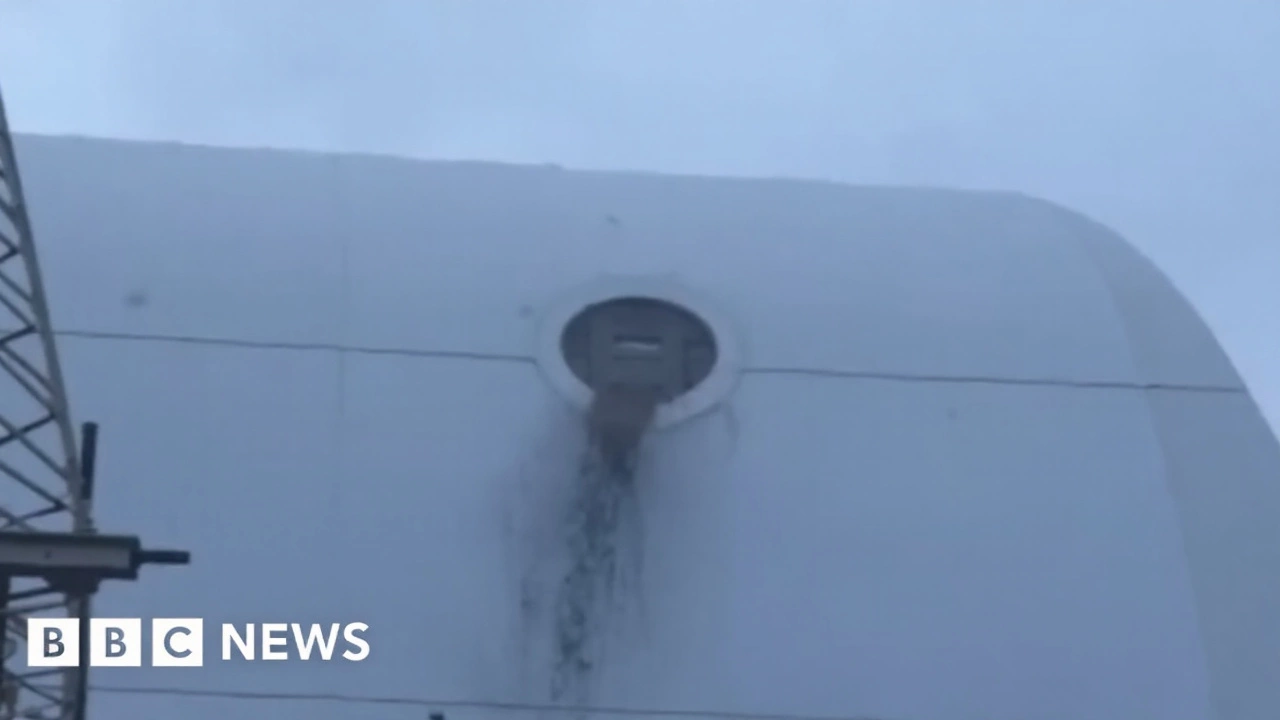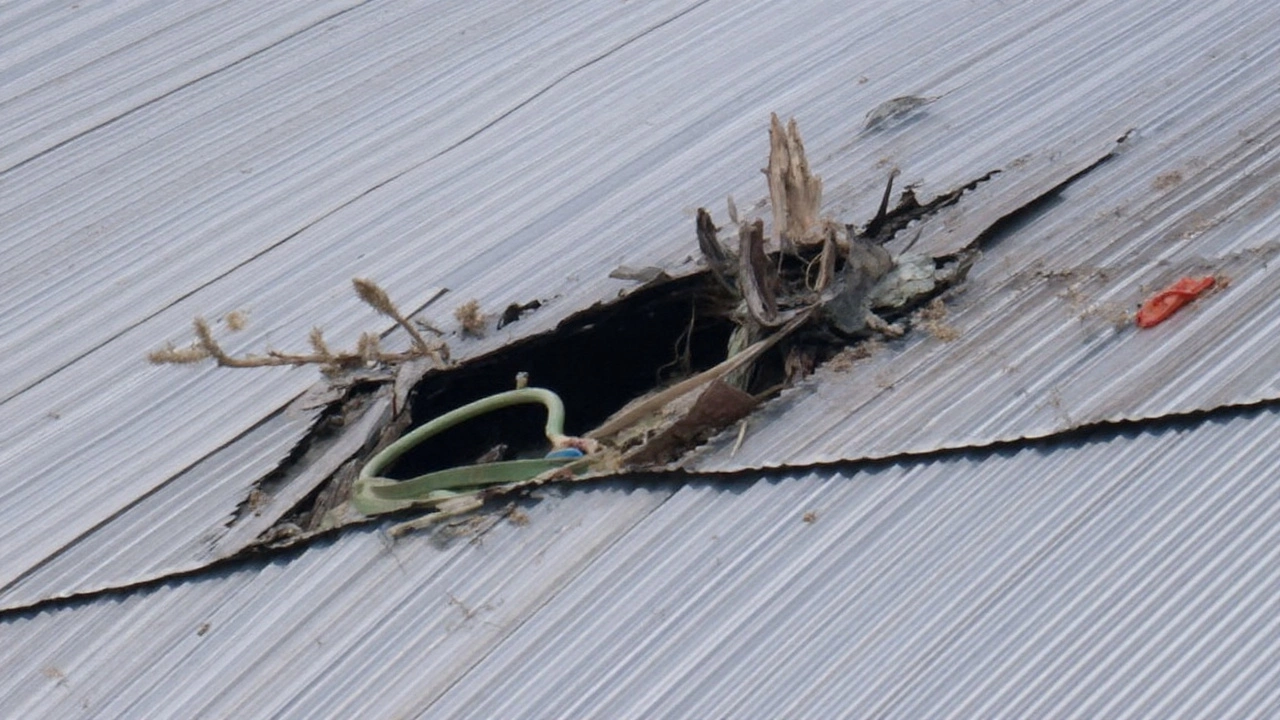A drone punched through Chernobyl’s shield. Radiation stayed stable — the risks did not
In the early hours of February 14, a Chernobyl drone strike ripped holes in the New Safe Confinement (NSC) — the vast steel arch that seals the ruins of Reactor 4. Ukrainian officials say a Russian-launched Shahed-136 hit the structure at around 1:50 a.m. local time, igniting fires and damaging key layers designed to keep radioactive dust locked inside. Radiation readings stayed normal, according to the International Atomic Energy Agency (IAEA), but the dome’s protective function took a real hit.
President Volodymyr Zelenskyy posted video showing a flash over the destroyed reactor and a plume of smoke. The Security Service of Ukraine identified the munition as an Iranian-made Shahed-136, the same low-cost, explosive drone Russia has used across the energy grid since 2022.
What did the strike do? Inspectors reported a one-meter breach in the steel shell, a 15-square-meter hole in the external cladding, and defects across roughly 200 square meters of the arch. The fire burned through insulation and destroyed up to 30% of the inner membrane in the affected zone — a critical layer that helps keep dust, moisture, and outside air from moving through the structure.
The blaze did not cause a radiation spike. IAEA experts on site said measurements inside and outside the arch stayed stable. Emergency crews contained the fire and, after days of monitoring and intermittent hotspots, fully extinguished it by March 13. Thermal cameras remain trained on the damaged section in case smoldering resumes.

What was hit — and why the damage matters
The NSC is the centerpiece of the world’s effort to make Chernobyl safe for the long haul. Funded by 45 countries at a cost of about $2 billion and slid into place in 2019, the arch spans 486 feet in length and 324 feet in height. It shelters the brittle 1986 “sarcophagus,” protects the site from rain and wind, and houses equipment to dismantle unstable structures over the reactor ruins.
Think of the NSC as layered protection. The outer cladding and steel arches take the weather. Inside, membranes and insulation help control air and humidity. Ventilation and filtration systems keep dust from circulating. Overhead cranes and handling gear are designed to work remotely so crews can dismantle hazardous pieces without standing near them.
The strike compromised that system. A hole in the steel and cladding can let in water and wind, raise humidity, and weaken temperature control. The burned membrane is more than cosmetic — it’s a barrier. If water gets in, it can corrode metal, damage electrical systems, and loosen radioactive dust. None of that guarantees a release, but it chips away at the safety margins built into the structure.
IAEA Director General Rafael Grossi called the attack “completely unacceptable,” repeating his warning that nuclear sites must never be targeted. The IAEA says its staff at Chernobyl did not detect abnormal radiation. That aligns with what we saw here: structural harm and a serious fire, but no immediate radiological impact. The concern is about what happens if weather intrudes or if repairs stall.
Repairs won’t be simple. The damaged section sits near the decaying sarcophagus, where radiation levels make long shifts impossible and some tasks unfit for human crews. Greenpeace nuclear specialist Shaun Burnie, who recently inspected the site, described the fix as “a very, very serious, enormous challenge,” and urged donors to step in quickly.
What would a repair look like? Engineers may need to stabilize the area, install a temporary weatherproof cover, and then replace or patch the cladding, insulation, and membrane. The steel breach likely needs a bolted plate or a welded insert. Much of this could require remote tools, custom scaffolding, and short, timed entries for crews wearing heavy protective gear. Every step has to limit dust and avoid adding stress to the old sarcophagus below.
There’s also a race against the seasons. Spring thaw and wind can push moisture and debris into open seams. If water penetrates, corrosion can accelerate, and sensitive equipment — including cranes used to dismantle the old shelter — could be affected. The longer a temporary patch stays in place, the bigger the risk that small defects spread.
Despite the strike, the site’s safety systems did what they were built to do: alarms, fire response, and constant monitoring. But the NSC is not a bunker designed for war. It was built to outlast the weather, not a direct hit from an explosive drone.
The wider war is part of the story. Ukrainian officials reported more drone activity near the exclusion zone on March 8, underscoring that the area remains in range. In 2022, Russian forces occupied the Chernobyl zone before withdrawing, stirring soil and triggering short-term spikes in radiation from dust. Since then, repeated strikes across Ukraine’s energy network have shown how drones can reach distant, high-value infrastructure with little warning.
International law discourages attacks on nuclear facilities because even a contained incident can have far-reaching consequences. Chernobyl is not an operating plant, but the logic is the same: anything that risks dispersing radioactive material is a red line for public safety across borders.
Money and manpower will matter now. The NSC was financed by a broad donor coalition. Kyiv will need that network again to source specialized steel, membrane materials, and filtration components, and to field teams trained for contaminated environments. Insurance, contracting, and security plans all get harder in an active war zone, and every day of delay keeps the dome short of full capability.
Authorities say the NSC needs extensive repairs to restore its protective capacity. Until then, the site relies on monitoring, temporary sealing, and weather management. The IAEA presence helps with transparency and confidence, but it’s not a shield against further attacks.
What to watch next:
- Damage map and timeline: Feb. 14 strike; structural breaches confirmed; fires fully out by March 13; thermal monitoring ongoing.
- Radiation status: IAEA reports normal levels; any change would prompt an immediate response.
- Repair plan: temporary weatherproofing first, then structural and membrane fixes; heavy use of remote tools likely.
- Security: reports of drones near the exclusion zone as of March 8; risk assessment for crews and equipment.
- Funding: whether the original donor group and new partners quickly mobilize materials and specialists.
For now, the readings are stable, the flames are out, and the hole in the arch is real. The question is how fast Ukraine and its partners can turn a patch into a fix — and whether the fighting will allow them the time and space to do it.
